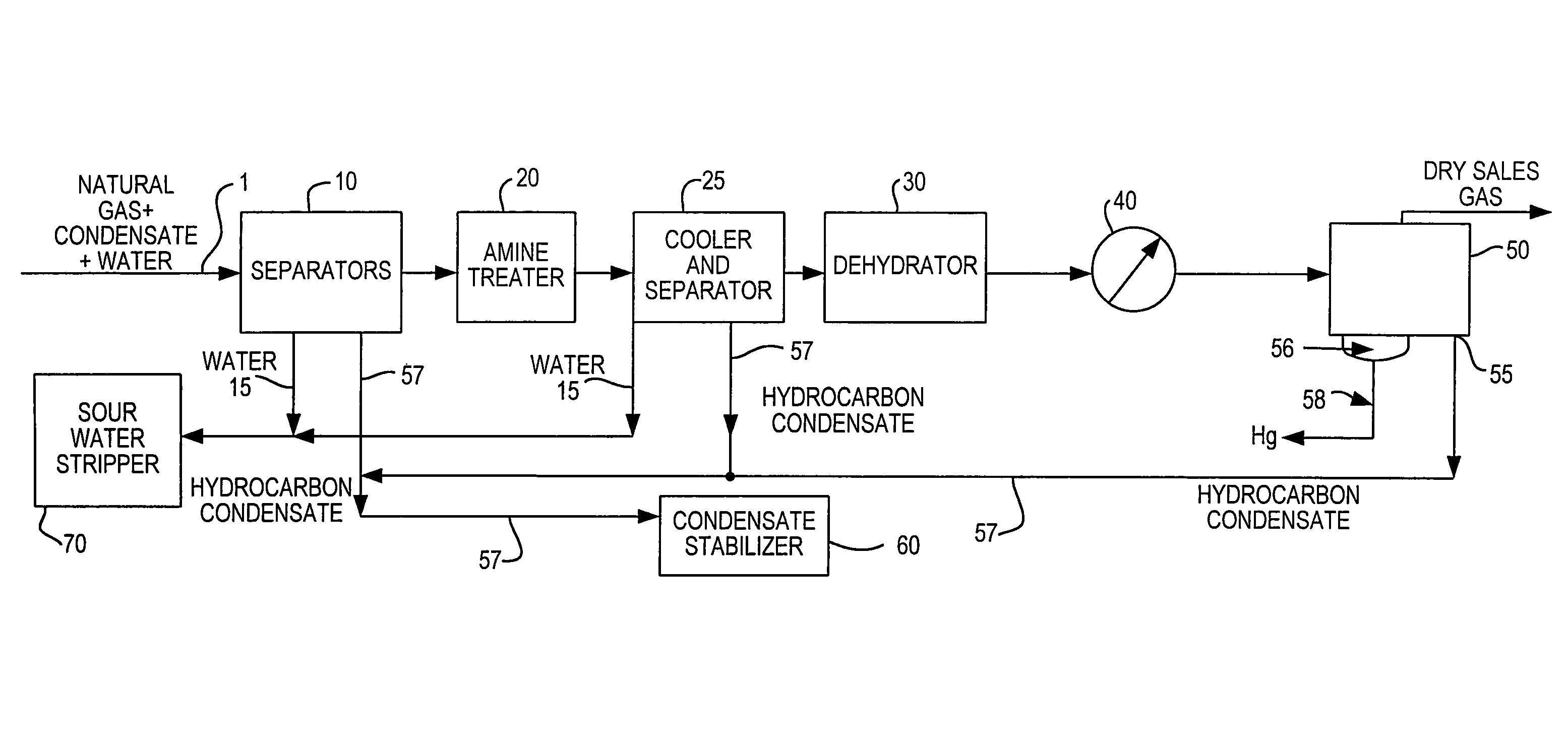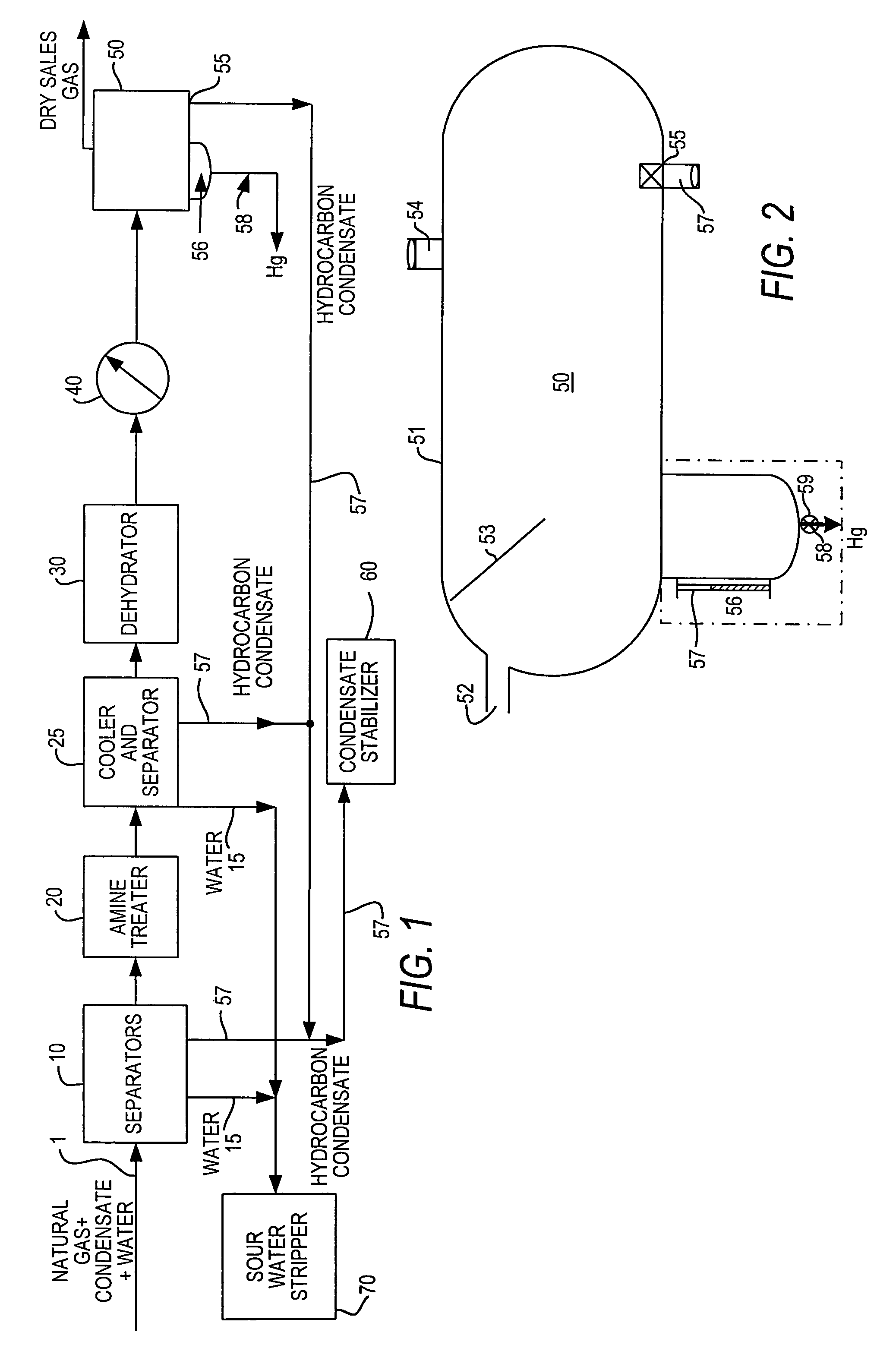Method for removing mercury from natural gas
a technology of natural gas and mercury, which is applied in the direction of gaseous fuels, inorganic chemistry, water/sludge/sewage treatment, etc., can solve the problems of difficult separation of mercury and liquid hydrocarbons from gas, little liquid formation, and inability to meet the needs of consumers, so as to reduce the velocity of liquid droplets, reduce the velocity of mercury vapor particles, and convenient and inexpensive manner
- Summary
- Abstract
- Description
- Claims
- Application Information
AI Technical Summary
Benefits of technology
Problems solved by technology
Method used
Image
Examples
Embodiment Construction
[0022]Referring to FIG. 1, the apparatus for separating mercury from a natural gas stream 1 includes a first separator 10, an amine treating unit 20, a cooler and separator 25, a dehydrator 30, a cooler 40, a mercury separator 50, a condensate stabilizer 60 and a sour water stripper 70. Each element is operatively connected in sequential fluid communication to the adjacent element by conventional gas transmission ducts and pipes and fitted with conventional fluid flow control means, e.g., valves, and pressure and temperature indicators, e.g., gages.
[0023]The natural gas stream to be processed enters the primary separator 10. The natural gas stream at this stage contains a variety of vaporized materials, including hydrocarbons, water and mercury. The separator 10 separates water and hydrocarbon condensate from the natural gas and other materials and sends the water to the sour water stripper 70 and the hydrocarbon condensate to stabilizer 60.
[0024]The natural gas flowing out of separ...
PUM
 Login to View More
Login to View More Abstract
Description
Claims
Application Information
 Login to View More
Login to View More - R&D
- Intellectual Property
- Life Sciences
- Materials
- Tech Scout
- Unparalleled Data Quality
- Higher Quality Content
- 60% Fewer Hallucinations
Browse by: Latest US Patents, China's latest patents, Technical Efficacy Thesaurus, Application Domain, Technology Topic, Popular Technical Reports.
© 2025 PatSnap. All rights reserved.Legal|Privacy policy|Modern Slavery Act Transparency Statement|Sitemap|About US| Contact US: help@patsnap.com


